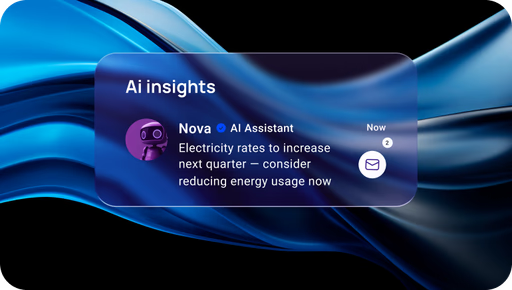August 10, 2025 • Startups
7 Ways AI Can Help Manage Your Financial Expenses
By Joseph Johnston

Nearly 3 in 4 CFOs say their expense processes are still too manual, and that’s a problem. When your team spends hours setting up receipts, reconciling reports, or approving claims, those lost hours could be spent driving strategy or growth. This article outlines seven practical AI-driven solutions to reduce friction and automate the repetitive work that slows teams down.
Overview — Why expense processes still slow startups down
Expense management remains a painful bottleneck for many startups. Fragmented receipts, inconsistent tagging, delayed approvals, and manual reconciliation consume finance teams’ time and create reporting blind spots. AI helps standardize and automate the entire flow so leaders can focus on forecasting and growth rather than data cleanup.
1) Automated expense categorization
AI automatically tags receipts and invoices into consistent categories using pattern recognition and historical rules. This reduces human error and ensures consistent accounting classifications across the company.
- Learns custom company categories over time.
- Reduces manual tagging by finance teams.
- Enables accurate category-level spend reports for budgeting.
2) Smart spend alerts & anomaly detection
Models monitor spending patterns and flag outliers—unusual vendors, duplicate charges, or sudden spikes—so finance can investigate before a small problem becomes an expensive one.
3) Invoice OCR and automated reconciliation
OCR extracts line items, dates, totals, and vendor names from receipts and invoices, then reconciles them with bank transactions and purchase orders automatically.
- Cuts manual reconciliation time from days to minutes.
- Creates audit-ready digital records.
- Links invoices to payments and approvals.
4) Predictive budgeting & runway forecasting
AI forecasts future spend using historical trends, seasonality, and pipeline data. Startups can simulate hiring, marketing spend, or runway scenarios quickly to make data-driven decisions.
5) Policy enforcement & rule automation
Set expense rules (meal limits, travel classes, vendor whitelists) and let the system flag or auto-reject violations, keeping spend aligned without constant manual review.
6) Faster approvals via intelligent routing
Workflows route expenses to the right approver automatically based on amount, department, or category, reducing bottlenecks and shortening reimbursement cycles.
7) Actionable insights & vendor optimization
AI surfaces vendors and subscriptions that are costly or underused, enabling teams to renegotiate contracts or cancel wasteful services.
How this works — practical implementation path
Start small: enable OCR or automatic categorization first, measure time saved, then expand to anomaly detection and forecasting. Keep human-in-the-loop reviews early so models learn from real decisions.
Final Thoughts
AI can convert expense processing from a months-long pain into an automated, auditable workflow. For startups, that means more time for strategy and less time reconciling receipts — and a clearer, faster path to scale.
More Blogs
August 11, 2025
A Glimpse Into the Daily Lives of Freelancers Who Use Kaisel
August 16, 2025
The Secret Fintech Hacks Millionaires Use (That You Can Too)
August 18, 2025
Is Your Money Really Safe Online? The Truth About Banking Security
August 20, 2025
Can AI Really Manage and Predict Your Finances Better Than You?
August 22, 2025
Why 2025 Is the Year of Fintech and How to Ride the Wave




